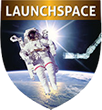Course Details
Course Summary
This is one of Launchspace’s most popular educational presentations. It deals with the fundamentals of spaceflight and space systems for professionals who work in the space and satellite communities, but who do not have a formal background in the field. The two-day course offers an up-to-date and fresh look at the physical principles, limitations and realities of launching satellites and operating in Earth orbit. Attendees gain a great deal of knowledge and insight into the business and technology that makes spaceflight possible. In addition, current relevant issues affecting the international space community are discussed at length. Technology trends, new policy initiatives and space program budgets are addressed. Specific topics include the state of the satellite and launch vehicle industries, prospects for new and low-cost launch systems and satellites, commercially viable space applications of the future and space entrepreneurship.
Course Materials
Each attendee receives a soft or hard copy of the presentation and reference materials.
Who Should Attend
Executives, program managers, financial officers, administrators, policy makers and other nontechnical professionals in aerospace and related industries. Anyone interested in spaceflight fundamentals, mission planning and current spaceflight developments. Non-space technical professionals who want to expand their knowledge of satellites, spaceflight and space technologies. Educators and entrepreneurs wishing to gain insight into potential applications and technologies of space.
What You Will Learn
How to get from Earth to space. Fundamentals of launch vehicles and satellites. What makes space access so expensive. The space environment and space debris. Applications and services that satellites provide. How do orbits work. Who builds satellites and launch vehicles and where do they come from. Space realities and fantasies. The impact of government policies on space access and usage. Forecast of space activities for the future.
Course Outline
- Introduction to the Universe and History of Space Flight
Limitations to spaceflight. Basic definitions and terms. Solar system geometry. Rockets, Sputnik, and the dawn of the Space Age. Apollo, Space Shuttle and International Space Station. - The Space Environment
The Sun and space weather. Hazards to humans in space. Human factors and surviving in orbit. Space debris and its threats to future spaceflight. - The Gravity Well
The laws of Newton. Mass, weight and zero-g. Beating the attraction of Earth. Rocket propulsion and the rocket equation. Energy needed for Virgin Galactic and energy to get to orbit. - Orbits and How They Work
The laws of Kepler. Balance of forces and the shape of orbits. Ideal and perturbed orbits. Maneuvering in space. Getting to geostationary Earth orbit (GEO). Going to another planet. - Transportation to orbit
Introduction to launch vehicles and how they work. Different types of launch vehicles and what goes into them. Launch sites around the world. A survey of international launch systems. - Artificial Satellites
Introduction to satellites and how they work. What goes into them. Survey of space missions and what is one offers. Commercial satellites used for profit. Satellites used for defense and science. Where satellite go after they expire. - Working in Space
Tools for zero-G. Remote manipulators, teleoperators and autonomous robots. Space suits and EVAs. Manufacturing and construction in space. - The Launch Vehicle Industry
Survey of current activities. Launch vehicle issues in the news. Policy, legal and business concerns. Opportunities for new entries. Future trends and prospects. - The Satellite Industry
Vital applications of satellites. Future satellite architectures and applications. Geostationary communications satellites. Low-Earth orbit (LEO) satellite designs. Pressing issues and competition.
Instructor

Dr. Marshall H. Kaplan has been teaching courses on space and satellite technology for more than four decades. His professional experience includes assignments in industry, academia and consulting. He is currently a Visiting Professor of Aerospace Engineering at the University of Maryland, a senior advisor on military, civil and commercial space activities to several space organizations. In recent years, Dr. Kaplan has spearheaded a number of space ventures related to the development of new satellites and launch vehicles. Space News has referred to him as the "rocket design guru." Dr. Kaplan was instrumental in the design and development of three-axis stabilized attitude control systems for communication satellites, and he is the author of several books including the text, "Modern Spacecraft Dynamics and Control." In recent years he has served as chief engineer on multiple launch vehicle programs and as a Senior Spacecraft Systems Engineer at Johns Hopkins University’s Applied Physics Laboratory. He has written more than 200 papers, reports and articles on various aspects of astronautics. Dr. Kaplan received advanced degrees in Aeronautics and Astronautics from M.I.T. and Stanford University, and he is a Fellow of the American Institute of Aeronautics and Astronautics (AIAA) and the American Astronautical Society (AAS).
